Tesla rolls out latest Safety Score update—Here’s what’s new

Tesla has officially started rolling out a new version of its insurance program’s Safety Scores beta, improving upon a few different metrics that make up the index.
As detailed on the Tesla Insurance web page, the company has updated its Safety Scores to beta version 2.2 from the previous version 2.1. The update primarily includes improvements to how Excessive Speeding is measured, along with the removal of Forward Collision Warnings (FCW) from the formula.
In addition, Tesla has slightly increased the values of related factors such as Hard Braking and Unsafe Following Time in the v2.2 formula, perhaps in an attempt to help accommodate some of the situations previously covered by the FCW rating.
READ MORE ON TESLA INSURANCE: Tesla launches insurance discount for FSD users in these two states
Tesla’s Safety Scores are used to determine premium rates for buyers of the company’s in-house insurance program, except in California, where privacy laws prohibit the use of real-time driving data to determine premiums. The company also says that its latest formula for Safety Scores were generated using over 22 billion miles of fleet data from its cars, while the company plans to continue improving the formula as more data comes in.
At this time, Tesla Insurance is available in the following 12 states, though Safety Scores aren’t available in California for the aforementioned reason:
- Arizona
- California
- Colorado
- Illinois
- Maryland
- Minnesota
- Nevada
- Ohio
- Oregon
- Texas
- Utah
- Virginia
You can see the factors that make up Tesla’s Insurance Safety Scores below or on its website here, along with the specific formula that makes up a drivers’ 0 to 100 Safety Score.
Hard Braking
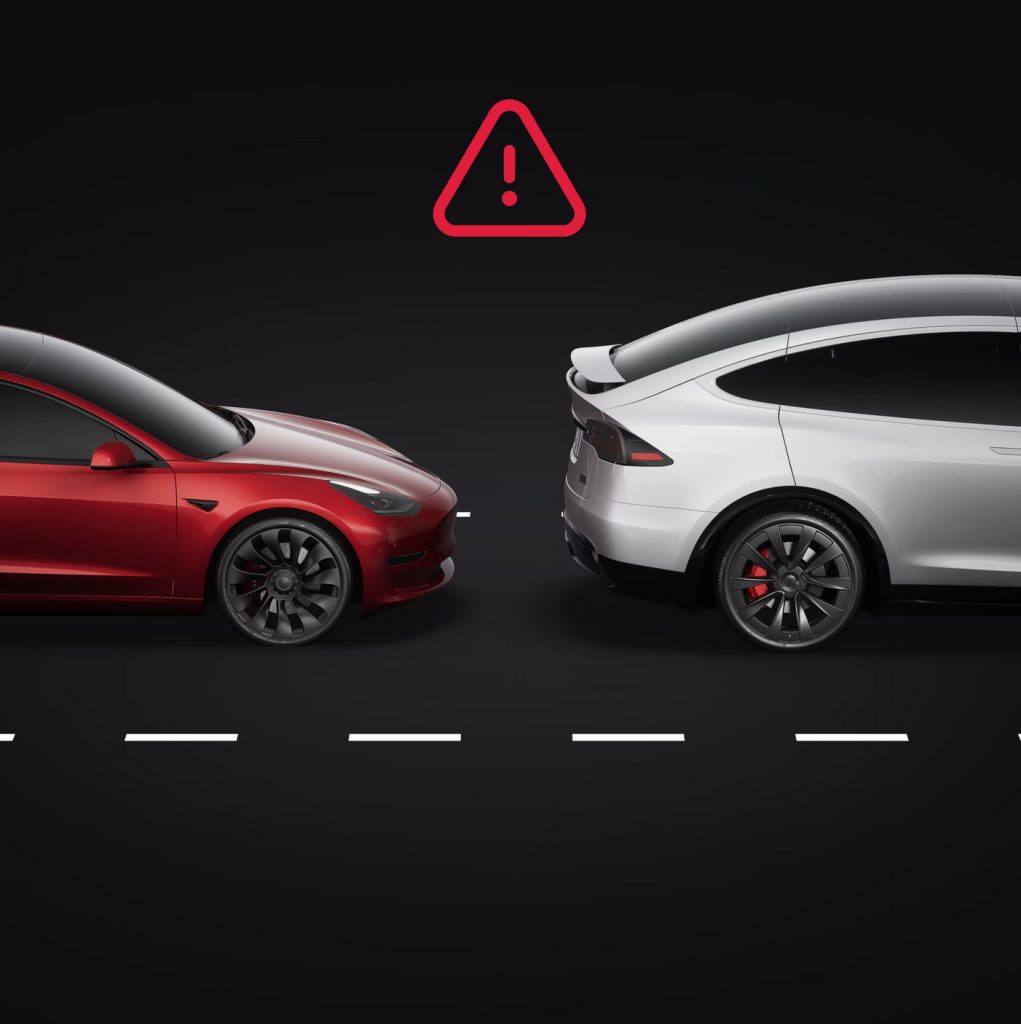
Credit: Tesla
Hard braking is defined as backward acceleration, measured by your Tesla vehicle, in excess of 0.3g. This is the same as a decrease in the vehicle’s speed larger than 6.7 mph, in one second. Hard braking is introduced into the Safety Score Beta formula as the proportion of time where the vehicle experiences backward acceleration greater than 0.3g as a percentage of the proportion of time the vehicle experiences backward acceleration greater than 0.1g (2.2 mph in one second). Hard braking while on Autopilot is not factored into the Safety Score Beta formula. For vehicles with Autopilot computer 3.0 or greater, braking while the vehicle detects yellow traffic lights is also not factored into the Safety Score Beta formula. If the vehicle is unable to detect a yellow traffic light at the time of the hard braking, the event will impact your Safety Score. The percentage shown in the app is the proportion of time spent braking done with excessive force when driving and Autopilot is not engaged. The value is capped at 5.2 percent in the Safety Score Beta formula.
Aggressive Turning
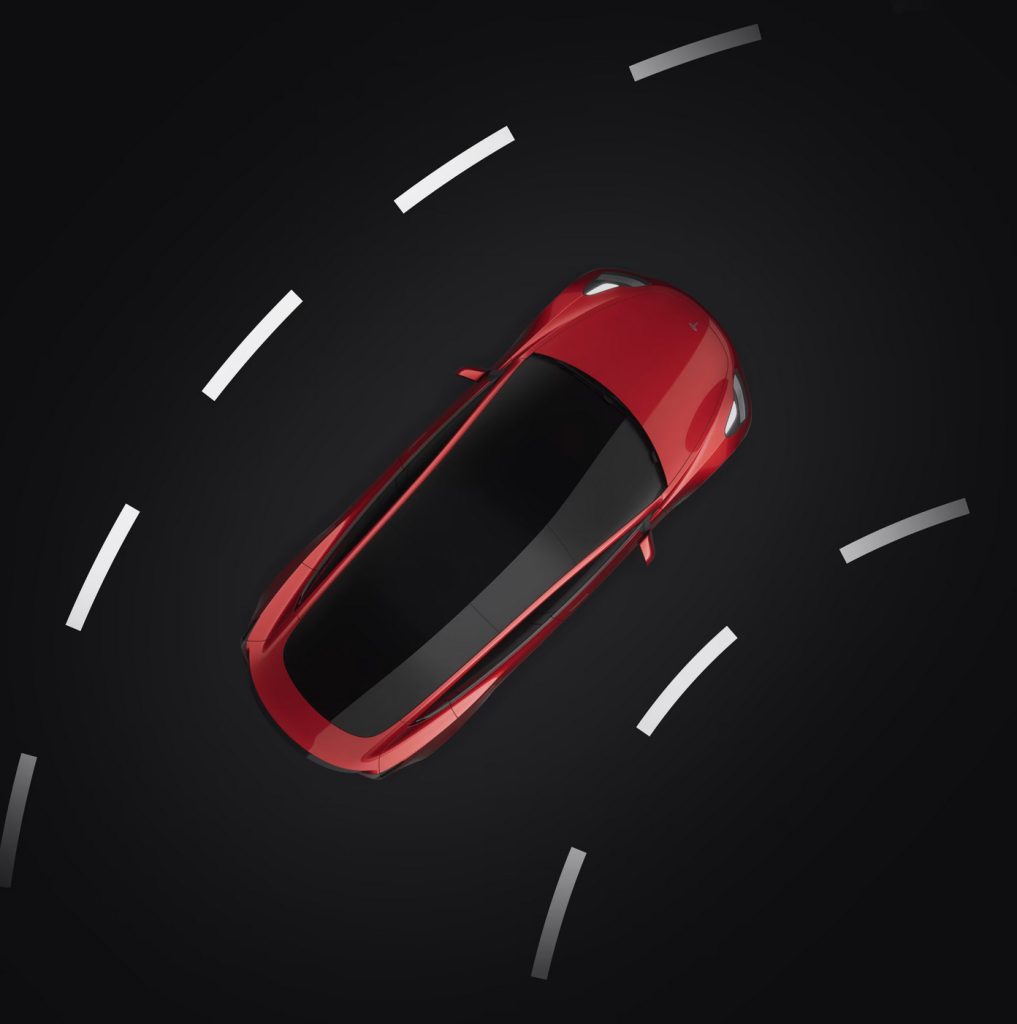
Credit: Tesla
Aggressive turning is defined as left/right acceleration, measured by your Tesla vehicle, in excess of 0.4g. This is the same as an increase in the vehicle’s speed to the left/right larger than 8.9 mph, in one second. Aggressive turning is introduced into the Safety Score Beta formula as the proportion of time the vehicle experiences left or right acceleration greater than 0.4g as a percentage of the proportion of time the vehicle experiences left or right acceleration greater than 0.2g (4.5 mph in one second). Aggressive turning while on Autopilot is not factored into the Safety Score Beta formula. The percentage shown in the Tesla app is the proportion of time spent turning with excessive force when driving and Autopilot is not engaged. The value is capped at 13.2 percent in the Safety Score Beta formula.
Unsafe Following
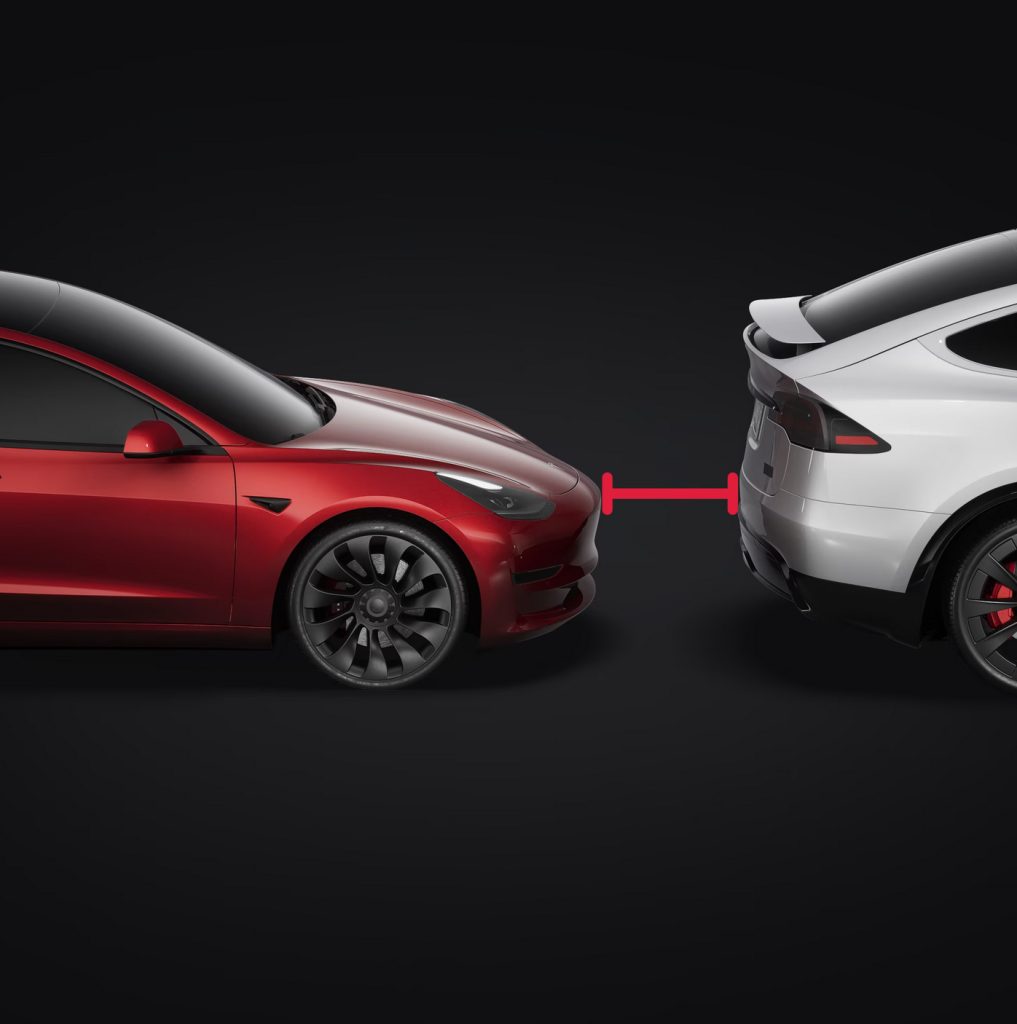
Credit: Tesla
Your Tesla vehicle measures its own speed, the speed of the vehicle in front and the distance between the two vehicles. Based on these measurements, your vehicle calculates the number of seconds you would have to react and stop if the vehicle in front of you came to a sudden stop. This measurement is called “headway.” Unsafe following is the proportion of time where your vehicle’s headway is less than 1.0 seconds relative to the time that your vehicle’s headway is less than 3.0 seconds. Unsafe following is only measured when your vehicle is traveling at least 50 mph and is incorporated into the Safety Score Beta formula as a percentage. Unsafe following while on Autopilot is not factored into the Safety Score Beta formula. The percentage shown in the Tesla app is the percentage of unsafe following when driving and Autopilot is not engaged. The value is capped at 63.2 percent in the Safety Score Beta formula.
Excessive Speeding

Credit: Tesla
Excessive Speeding is defined as the proportion of time spent driving in excess of 85 mph or driving 20% faster than the vehicle in front of you, when that vehicle is going over 25 mph and is within 100 meters of your vehicle. This value is expressed as a percentage of total driving time and is capped at 10.0% in the Safety Score Beta formula. Speeding while on Autopilot is not factored into the Safety Score Beta formula.
Late-Night Driving

Credit: Tesla
Late-Night Driving is defined as the number of seconds you spend driving at night (11 PM – 4 AM) divided by the number of seconds you spend driving total during the day and night. Due to the variable risk level associated with driving during each late-night hour, each hour is weighed differently, and driving at each hour will affect your Safety Score differently. For example, driving at 11 PM will not affect your Safety Score as heavily as driving at 2 AM. Drive sessions that span two days will apply to the day the trip ends. Late-Night Driving includes all driving at night (11 PM – 4 AM) including any driving done on Autopilot. The value is capped at 14.2 percent in the Safety Score Beta formula.
Forced Autopilot Disengagement

Credit: Tesla
The Autopilot system disengages for the remainder of a trip after the driver has received three audio and visual warnings. These warnings occur when your Tesla vehicle has determined that the driver has not applied sufficient resistance to the steering wheel or has become inattentive. Forced Autopilot Disengagement is introduced into the Safety Score Beta formula as a 1 or 0 indicator. The value is 1 if the Autopilot system is forcibly disengaged during a trip, and 0 otherwise.
Unbuckled Driving
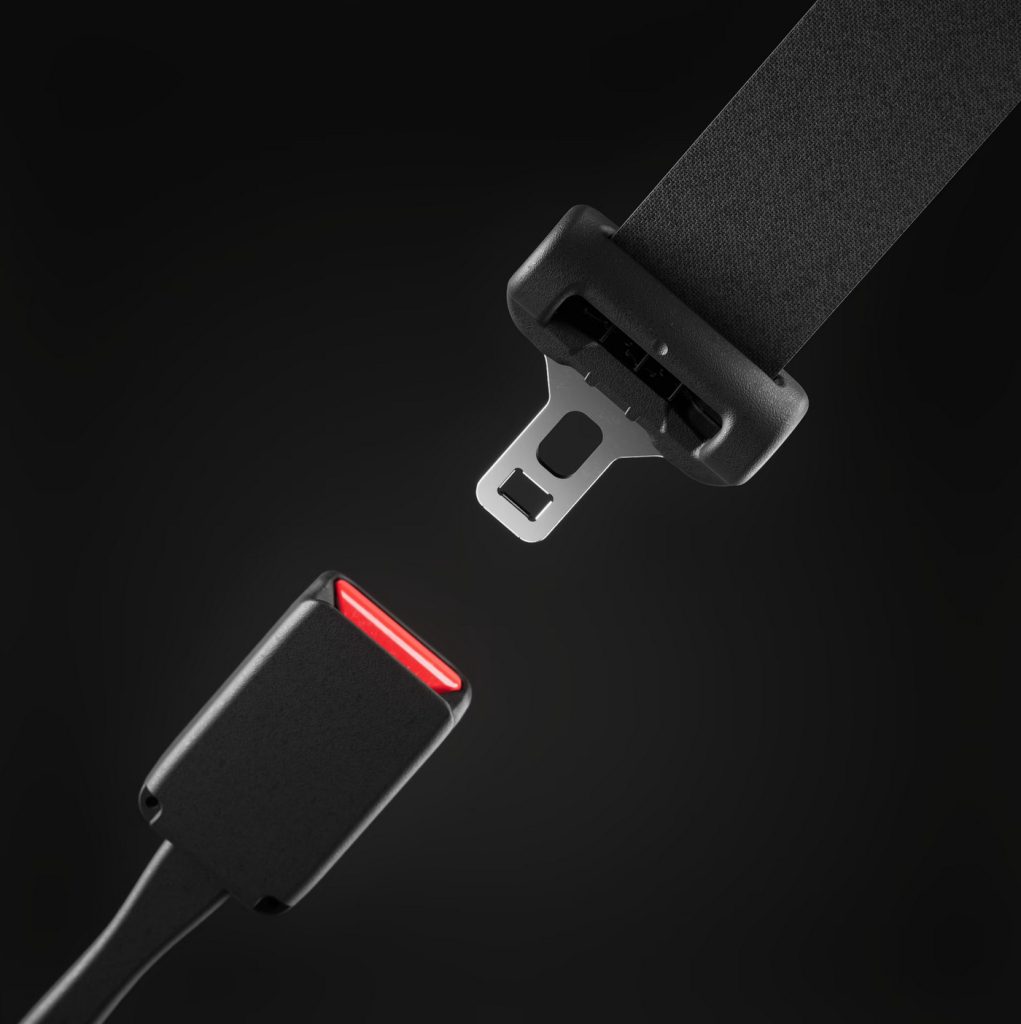
Credit: Tesla
Unbuckled Driving is defined as the proportion of time spent driving above 10 mph without fastening the driver’s seatbelt in a Tesla vehicle, as a percentage of time spent driving above 10 mph. The value shown in the Tesla app is the proportion of time driven at a speed over 10 mph, without buckling the driver’s seatbelt, as a percentage of time spent driving over 10 mph. The value is capped at 31.7 percent in the Safety Score Beta formula.
Tesla’s formula for Safety Score beta v2.2
Tesla takes the formula pictured below, dubbed its Predicted Collision Frequency (PCF), and converts it into the 0 to 100 version 2.2 Safety Score it assigns based on driver behavior. The 2.1 Safety Score formula can also be seen on the Tesla Insurance page, though the below formula is for the newly launched version 2.2.
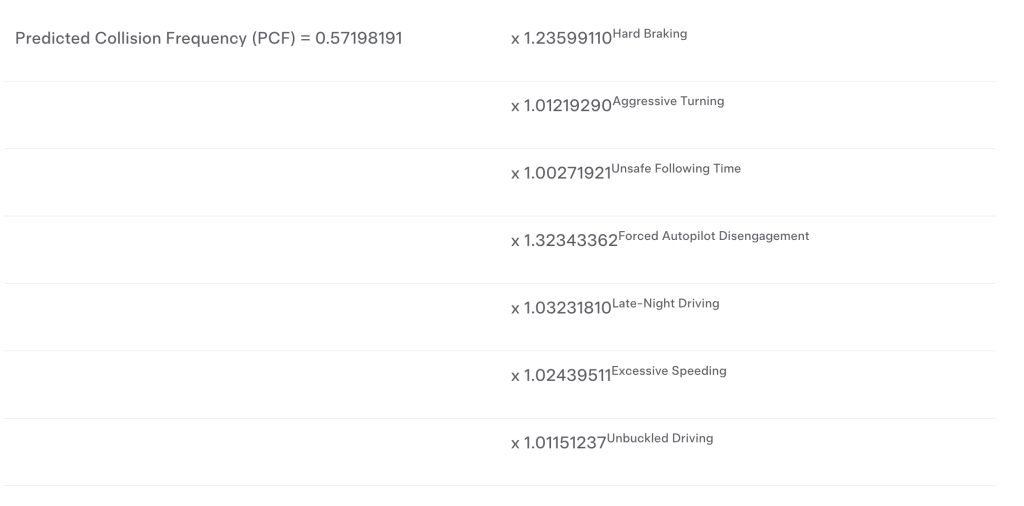
Credit: Tesla
Tesla posts Q4 2024 vehicle safety report
Source link




